Videotelephony
Applications of videotelephony include sign language transmission for deaf and speech-impaired people, distance education, telemedicine, and overcoming mobility issues.[citation needed] The concept of videotelephony was first conceived in the late 1870s, both in the United States and in Europe, although the basic sciences to permit its very earliest trials would take nearly a half century to be discovered.[citation needed] The prerequisite knowledge arose from intensive research and experimentation in several telecommunication fields, notably electrical telegraphy, telephony, radio, and television.At the 1998 Winter Olympics opening ceremony in Nagano, Japan, Seiji Ozawa conducted the Ode to Joy from Beethoven's Ninth Symphony simultaneously across five continents in near-real-time.Mobile collaboration systems now allow people in previously unreachable locations, such as workers on an offshore oil rig, the ability to view and discuss issues with colleagues thousands of miles away.[15] The highest ever video call (other than those from aircraft and spacecraft) took place on May 19, 2013, when British adventurer Daniel Hughes used a smartphone with a BGAN satellite modem to make a videocall to the BBC from the summit of Mount Everest, at 8,848 metres (29,029 ft) above sea level.[18] Videoconferencing became so widespread during the pandemic that the term Zoom fatigue came to prominence, referring to the taxing nature of spending long periods of time on videocalls.During the late 1930s, the post offices of several European governments established public videophone services for person-to-person communications using dual cable circuit telephone transmission technology.Popular corporate video-conferencing systems in the present day have migrated almost exclusively to digital ISDN and IP transmission modes due to the need to convey the very large amounts of data generated by their cameras and microphones.Mobile collaboration systems are another recent development, combining the use of video, audio, and on-screen drawing capabilities using newest generation hand-held electronic devices broadcasting over secure networks, enabling multi-party conferencing in real time, independent of location.[41][42] Videoconferencing in the late 20th century was limited to the H.323 protocol (notably Cisco's SCCP implementation was an exception), but newer videophones often use SIP, which is often easier to set up in home networking environments.An MCU is characterized according to the number of simultaneous calls it can handle, its ability to conduct transposing of data rates and protocols, and features such as Continuous Presence, in which multiple parties can be seen on-screen at once.Videophones are increasingly used in the provision of telemedicine to the elderly, disabled, and to those in remote locations, where the ease and convenience of quickly obtaining diagnostic and consultative medical services are readily apparent.For example, a rural medical center in Ohio used videoconferencing to successfully cut the number of transfers of sick infants to a hospital 70 miles (110 km) away.[71] Special peripherals such as microscopes fitted with digital cameras, videoendoscopes, medical ultrasound imaging devices, otoscopes, etc., can be used in conjunction with videoconferencing equipment to transmit data about a patient.[75] Videoconferencing is also currently being introduced on online networking websites, in order to help businesses form profitable relationships quickly and efficiently without leaving their place of work.Live, visual interaction removes traditional restrictions of distance and time, often in locations previously unreachable, such as a manufacturing plant floor thousands of miles away.[77][78][79][80] With the development of lower-cost endpoints, the integration of video cameras into personal computers and mobile devices, and software applications such as FaceTime, Skype, Teams, BlueJeans and Zoom, videoconferencing has changed from just a business-to-business offering to include business-to-consumer (and consumer-to-consumer) use.[82][better source needed] Researchers also find that attendees of business and medical videoconferences must work harder to interpret information delivered during a conference than they would if they attended face-to-face.[85] Those factors largely disappeared with the introduction of more efficient and powerful video codecs and the advent of lower-cost high-speed ISDN data and IP (Internet) services in the 1990s.The relatively low cost and widespread availability of 3G mobile phone technology with video calling capabilities have given deaf and speech-impaired users a greater ability to communicate with the same ease as others.Typical uses of the various technologies described above include calling one-to-one or conferencing one-to-many or many-to-many for personal, business, educational, deaf Video Relay Service and tele-medical, diagnostic and rehabilitative purposes.[96] personal videocalls to inmates incarcerated in penitentiaries, and videoconferencing to resolve airline engineering issues at maintenance facilities, are being created or evolving on an ongoing basis.Latin-based translations of videophone in other languages include vidéophone (French), Bildtelefon (German), videotelefono (Italian), both videófono and videoteléfono (Spanish), both beeldtelefoon and videofoon (Dutch), and videofonía (Catalan).[98] In science fiction literature, names commonly associated with videophones include telephonoscope, telephote, viewphone, vidphone, vidfone, and visiphone.[101] Other notable examples of videophones in popular culture include an iconic scene from the 1968 film 2001: A Space Odyssey set on Space Station V. The movie was released shortly before AT&T began its efforts to commercialize its Picturephone Mod II service in several cities and depicts a video call to Earth using an advanced AT&T videophone—which it predicts will cost $1.70 for a two-minute call in 2001 (a fraction of the company's real rates on Earth in 1968).Film director Stanley Kubrick strove for scientific accuracy, relying on interviews with scientists and engineers at Bell Labs in the United States.In one 2001 movie scene a central character, Dr. Heywood Floyd, calls home to contact his family, a social feature noted in the Making of a Myth.By the early 2010s videotelephony and videophones had become commonplace and unremarkable in various forms of media, in part due to their real and ubiquitous presence in common electronic devices and laptop computers.Additionally, TV programming increasingly used videophones to interview subjects of interest and to present live coverage by news correspondents, via the Internet or by satellite links.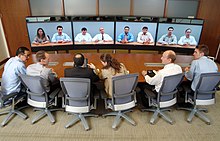
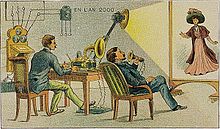









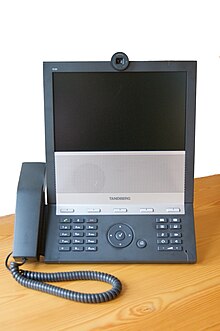

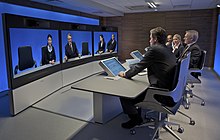

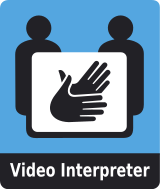


Videophone (disambiguation)telepresencetwo-way communicationTelephonesmartphonesconventional telephone linesvideo codecsInternet servicesign languagespeech-impaireddistance educationtelemedicinemobility issuesNews mediaHistory of videotelephonyelectrical telegraphytelephonytelevisionclosed-circuit televisioncoax cableJohn Logie BairdAT&T's Bell LabsAT&T Corporationvideo compressionspace flightssatellitesPicturephonenetwork effectinteroperabilityStanford Research InstituteNLS computer technologydigital telephonyMedia spacePictureTel Corp.initial public offeringcircuit boardframe rateAT&T Bell LabsCU-SeeMeProject DIANEdigital videouncompressed videovideo coding standardvideo coding standardsSan FranciscoCape Town1998 Winter OlympicsNaganoSeiji OzawaOde to JoyBeethoven's Ninth SymphonyKyoceracamera phonemobile phonesTFT displayiPhone 4computer webcamsInternet telephonytelepresence technologyhigh definitionLifesizeInteropLas VegasNevadadisplay resolutionPolycomhand-held mobile devicesMobile collaborationsmartphoneBGAN satellite modemMount EverestCOVID-19 pandemicGoToMeetingLogMeInStarLeafZoom fatigueComputers in Human BehaviourFacebookNortelhand-held electronic devicesProximity chatWebcamspersonal computersvideo qualitycapital costtransmissioncost of useWeb cameracomputerVideophonesplain old telephone serviceInternet Protocolbeamformingmicrophone arraysVideoconferencing systemsmultipoint control unitsTelepresence systemsComputer securitycomputer hackersfuturistse-mailBill GatesEye contactturn-takingparallaxTelcordia TechnologiesWhite Houselatencytotal round-trip timetablet computersPolycom VSX 7000Google Hangoutssoftwarepacketsdigital networkFisheyevideo camerawebcamcomputer monitorprojectormicrophonesloudspeakersInternetremote controlledvideo projectorWebRTC
